Green Spaces at City Campus
Following feedback from colleagues and students, we have focused on creating more green space and gardens on our City Campus. This will help us to enhance the biodiversity of our university environment, whilst creating relaxing spaces to study and work.
Newton and Arkwright Green Roof
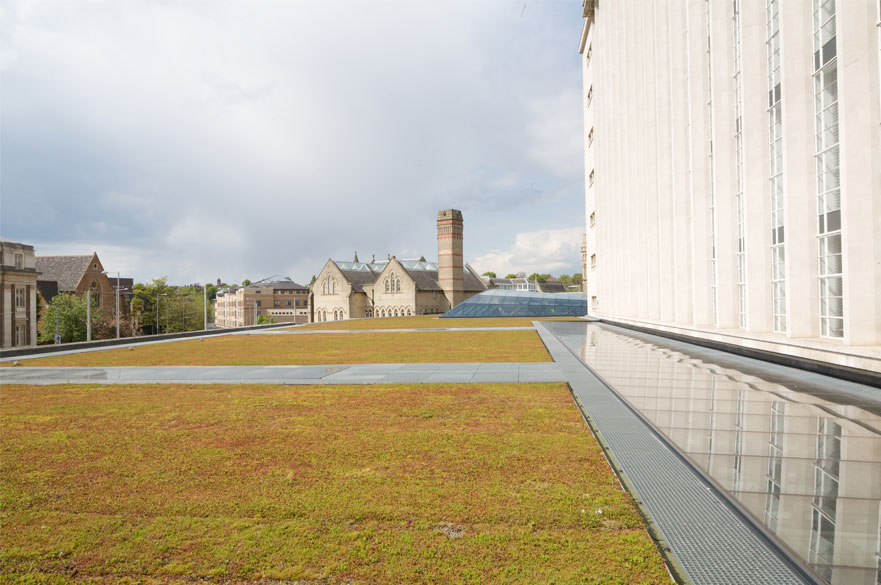
Newton and Arkwright has one of the region’s largest green roofs, with 13 varieties of sedum covering an area of approximately 2,500m2. Not only does this array of flowering plants brighten up the view from the second floor upwards, it also plays an important role in attracting a wide range of insect species to the city centre including bumblebees, butterflies, ladybirds and grasshoppers. Bird species that can be found include blackbirds, song thrushes, wrens, robins and even rare black redstarts.
University Hall Living Wall
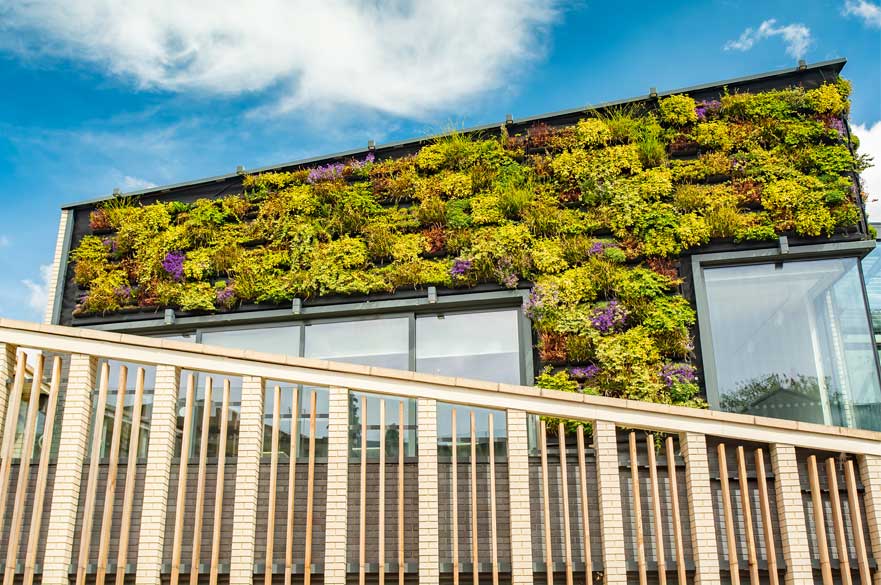
NTU’s first living green wall can be found at University Hall. This eye-catching feature of the building provides an additional habitat for city centre wildlife as well as year-round colour. The species of plants include ornamental grasses, campanula and euonymus.
Green walls assist in improving local air quality by removing impurities, while naturally absorbing and retaining heat – reducing the need for air conditioning and therefore reducing energy costs.
The wall utilises a panel-and-pockets system, meaning that rectangular polystyrene panels with vacuum formed 'pots' are hung on rails attached to the building's façade. The rails are irrigated, and panels have capillary matting at the back that draws up the water. A solenoid valve ensures water is released as needed.
Design and Digital Arts Green Wall
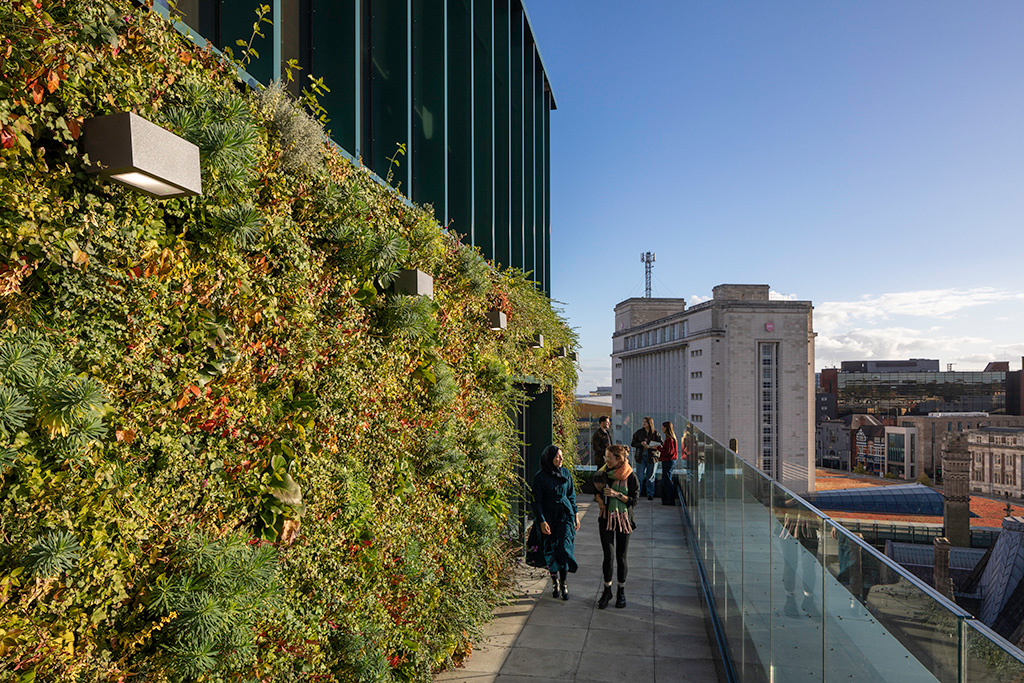
The new Design & Digital Arts building, created for the Nottingham School of Art & Design, is designed to equip graduates for success in the expanding cultural and creative industries.
The development also features a Green Wall, adding a vibrant botanical backdrop to a roof terrace. Spanning approximately 75 square meters, the living facades face west and south, capturing optimal sunlight. The design incorporates seasonal flowering plants to attract pollinators, with an organic arrangement divided into two matrices to suit the different exposures. The south elevation boasts a variety of flowering plants, including Bellflower, Erysimum Bowles Mauve, Bergenia, and Heuchera.
Boots Roof Garden
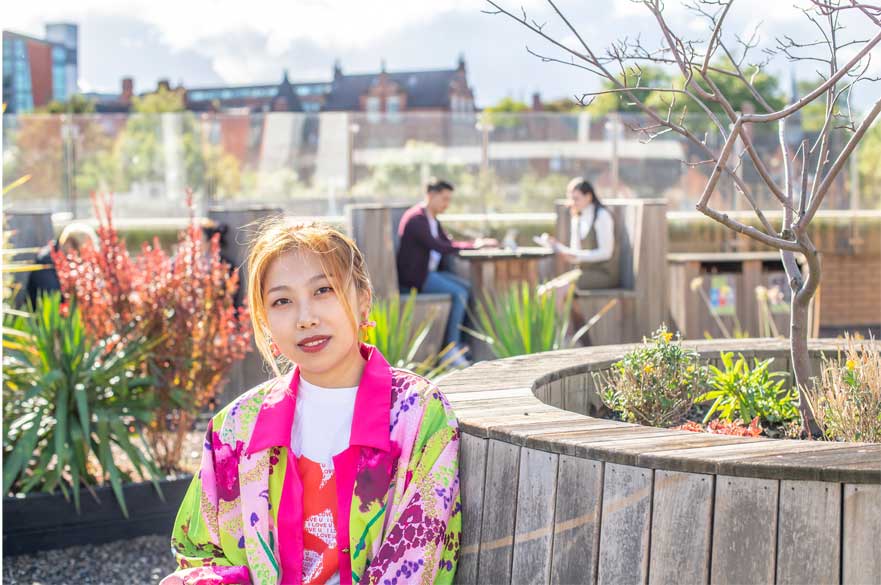
Boots Roof Garden offers new space for students and staff to relax, socialise and study in. Accessed through the top floor of Boots Library, the garden has Wi-Fi access, lots of seating and some covered areas to shelter you from the elements.
Green roofs are a fantastic way to improve building efficiency, reduce flood risk and provide a tranquil environment for people and wildlife. Boots Library does all of this, using recycled and sustainable materials throughout.
To help protect and enhance biodiversity on the City Campus, the planting scheme in the garden includes a range of plants to attract a variety of wildlife species.
Dryden Corner
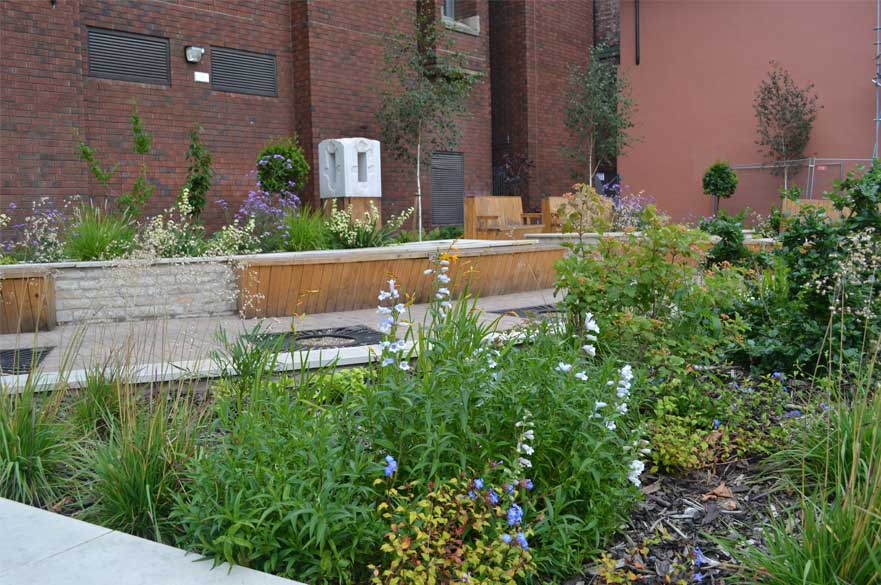
The redevelopment of Dryden Corner has turned a dark and unloved plot of land into a bright and airy space in which to stop off and enjoy lunch or catch some sunshine between lectures.
Designed by NTU alumna Jackie Setchfield, the corner garden features the rill, a relaxing water feature, and plenty of seating made from sustainably sourced wood.
In 2023, a striking 12-meter-high poem was painted onto the side of a building at Dryden Corner to inspire reflection and encourage visitors to take a moment for themselves. This artwork was created by NTU alumna Lucinda Ireland and features a poem titled Here & Now, written by Claire Miller, a Web and Digital Content Officer at NTU. Claire penned the poem while seated in the Dryden Pocket Garden, drawing inspiration directly from the space and its atmosphere. The poem now adorns the side of 50 Shakespeare Street, a testament to the creative energy sparked by this transformed environment.
Waverly Natural Dye Garden
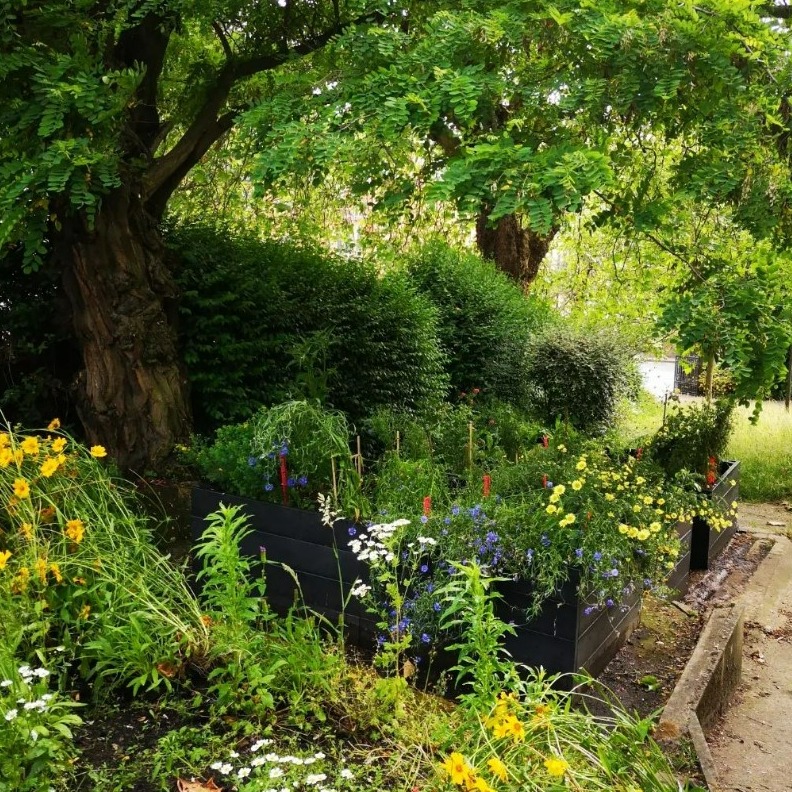
Technical staff and students from the Nottingham School of Art & Design have upgraded a pocket of space outside of the Waverley building into a sustainable natural dye garden. The garden is an organic, chemical-free and self-sustained area for growing plants which can be utilised to make natural and sustainable dyes for student projects and teaching.
Using natural dyes has several significant environmental advantages, including:
- Natural dyes are made of entirely renewable resources and are biodegradable.
- Natural dyes are non-toxic and don't expose workers to harsh chemicals like synthetic dyes or release dangerous by-products into the environment.
- Natural dyes require less water to produce, and any wastewater can be recycled as it will be nutrient-rich
The space utilises compost bins, water butts and natural growing processes and is available to all students, to enhance their learning and as a sustainability and wellbeing resource.
Digital Media Hub Roof Garden
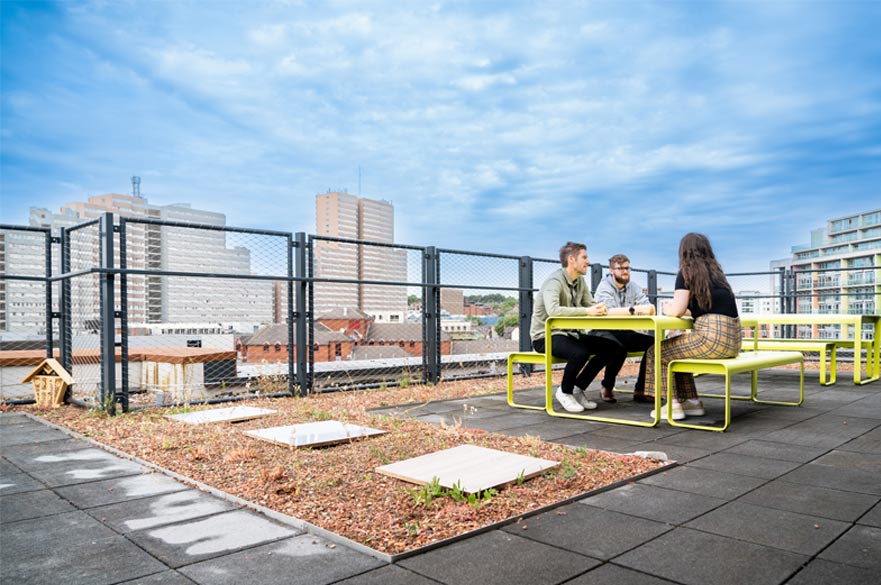
A green roof has been included on the Digital Media Hub which will help support city centre biodiversity.
Integrated swift boxes have been incorporated into the buildings brick work and future for ground level landscaping are in discussion.
View the City Landscape Management Plan here.